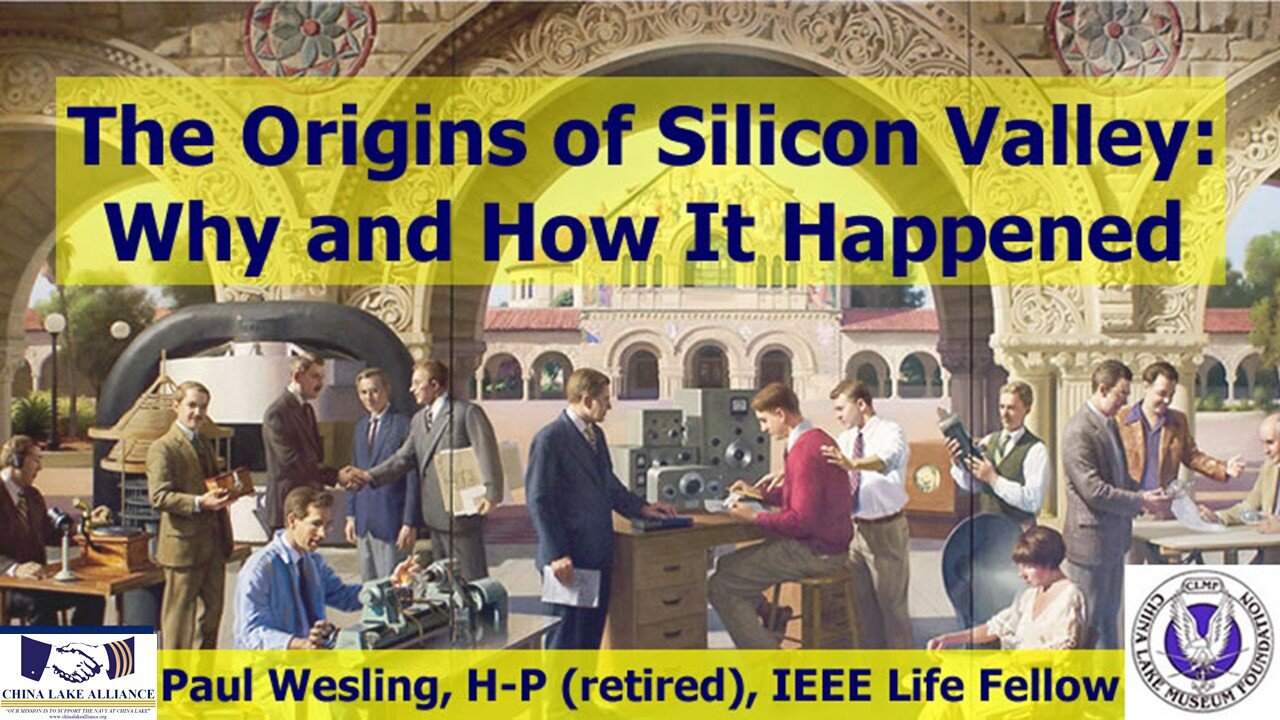-- Paul Wesling, Stanford ’66 (BSEE) and ’68 (MS-MatSci), IEEE Life Fellow, retired from Tandem Computers/Hewlett Packard.
Why did Silicon Valley come into being? The story goes back to the local hobby group of Hams (amateur radio operators) trying to break RCA's tube patents, early Stanford engineers, the sinking of the Titanic and WW I, early “angel” investments, Fred Terman and Stanford University, local invention of high-power tubes (gammatron, klystron), WW II and radar, new approaches to running companies, and the SF Bay Area infrastructure that developed -- these factors pretty much determined that the semiconductor and IC industries would be located in the Santa Clara Valley of California, and it would become the model for innovation worldwide.
Paul Wesling, an IEEE Life Fellow and Distinguished Lecturer, will give an exciting and colorful history of device technology development and innovation that began in Palo Alto with some Stanford grads, and spread across the Santa Clara Valley during and following World War II. You'll meet some of the colorful characters – Cyril Elwell, Lee DeForest, Bill Eitel, Charles Litton, Fred Terman, David Packard, Bill Hewlett and others -- who came to set leadership patterns for the worldwide electronics industries through their inventions and process development and allied management techniques. Exploding after military investments during and after WW II, this innovation continued through analog design, to digital, then to software, biotech, the Internet, mobile, Big Data, virtual reality, and now autonomous transportation. He’ll end by telling us about some current movements that keep alive the spirit of the radio Hams and the Homebrew Computer Club -- Maker Faire, MeetUps, incubators, and the other entrepreneurial groups where geeks gather to start new companies that invent the future.
Paul Wesling,
past IEEE SF Bay Area Communications Director and Webmaster,
and Life Fellow of the IEEE
Paul Wesling got interested in technology as a youngster, including a Scout trip to NOTS to see the Sidewinder and rocket sled when he was 14. He went on to receive his BS in electrical engineering and his MS in materials science from Stanford University. Following assignments at GTE/Lenkurt Electric, ISS/Sperry-Univac, Datapoint Peripheral Products (VP - Product Integrity), and Amdahl (mainframe testing), he joined Tandem Computers in Cupertino (now part of Hewlett Packard) in 1985. He designed several multi-chip module prototypes, managed Tandem's Distinguished Lectures series, and organized a number of advanced technology courses for his Division and also for the IEEE. He managed a grant from the National Science Foundation for the development of multimedia educational modules. Paul retired from HP in 2001, and then served for 10 years as the Communications Director for the IEEE’s S.F. Bay Area Council.
As vice president of publications from 1985 through 2008, he supervised four archival journals and a newsletter for IEEE’s Electronics Packaging Society. He is a Fellow of the IEEE, and received the IEEE Centennial Medal, the Board's Distinguished Service award, the Society Contribution Award, and the IEEE's Third Millennium Medal. He has organized over 500 courses for the local IEEE chapter in the Santa Clara Valley (Silicon Valley), many of them held at Stanford University (and, more recently, at Silicon Valley company facilities). An Eagle Scout, he served as scoutmaster of his local Boy Scout Troop for 15 years, was Advisor of a High-Adventure Crew, and enjoys backpacking, fly fishing, guitar and amateur radio (call sign: KM6LH).
